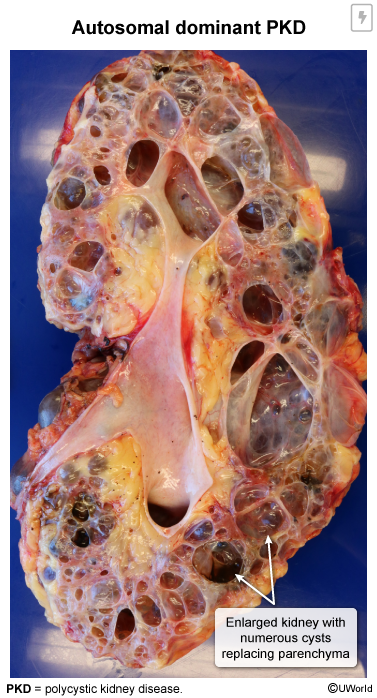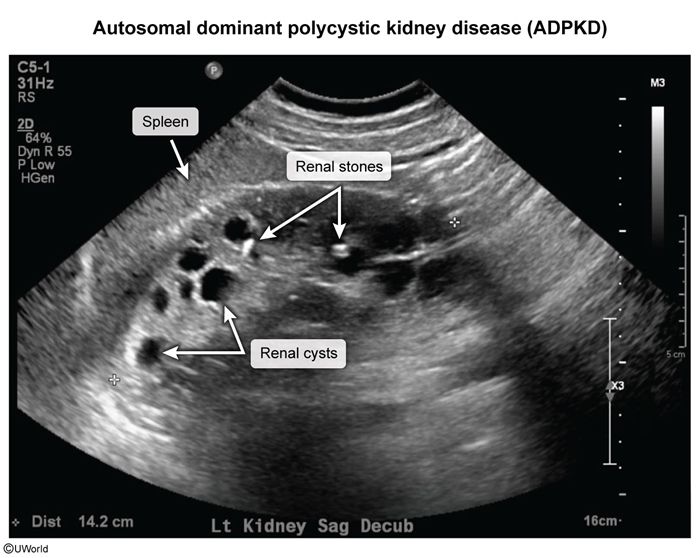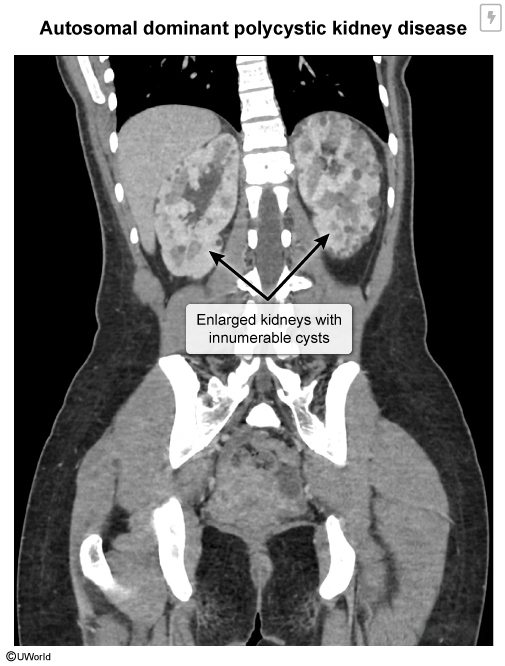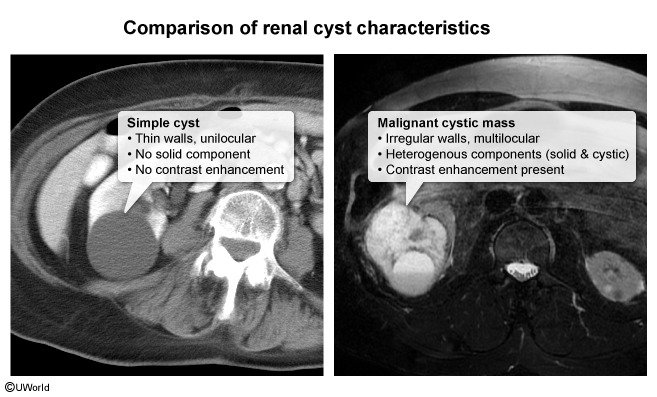Polycystic Kidney Disease And Other Renal Cysts
Article Sections
Introduction
Polycystic kidney disease most often refers to autosomal dominant polycystic kidney disease (ADPKD), the primary focus of this article. ADPKD is the most common inherited kidney disorder, affecting approximately 1 in 400 to 1,000 people worldwide. It is a systemic disorder that primarily affects the kidneys causing fluid-filled cysts, but it can also involve other organs, particularly the liver, pancreas, and cerebral vasculature. ADPKD typically manifests in adulthood, with symptoms often appearing between ages 30 and 50, and can lead to kidney dysfunction, hypertension, and eventually end-stage renal disease (ESRD).
Autosomal recessive polycystic kidney disease (ARPKD) is less common and primarily affects young children; ARPKD and other cystic kidney disease are briefly discussed in the differential diagnosis section of this article.
Continue Learning with UWorld
Get the full Polycystic Kidney Disease And Other Renal Cysts article plus rich visuals, real-world cases, and in-depth insights from medical experts, all available through the UWorld Medical Library.
Figures
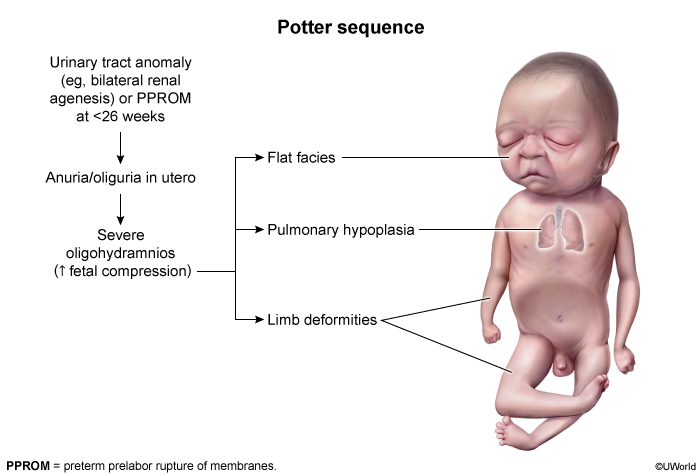
Images
